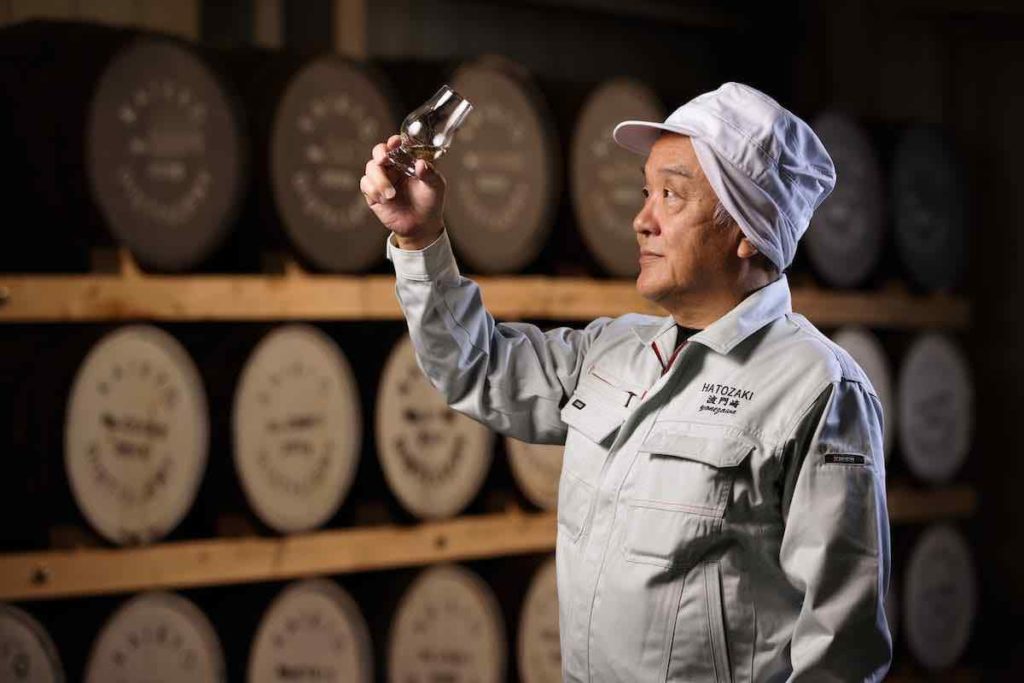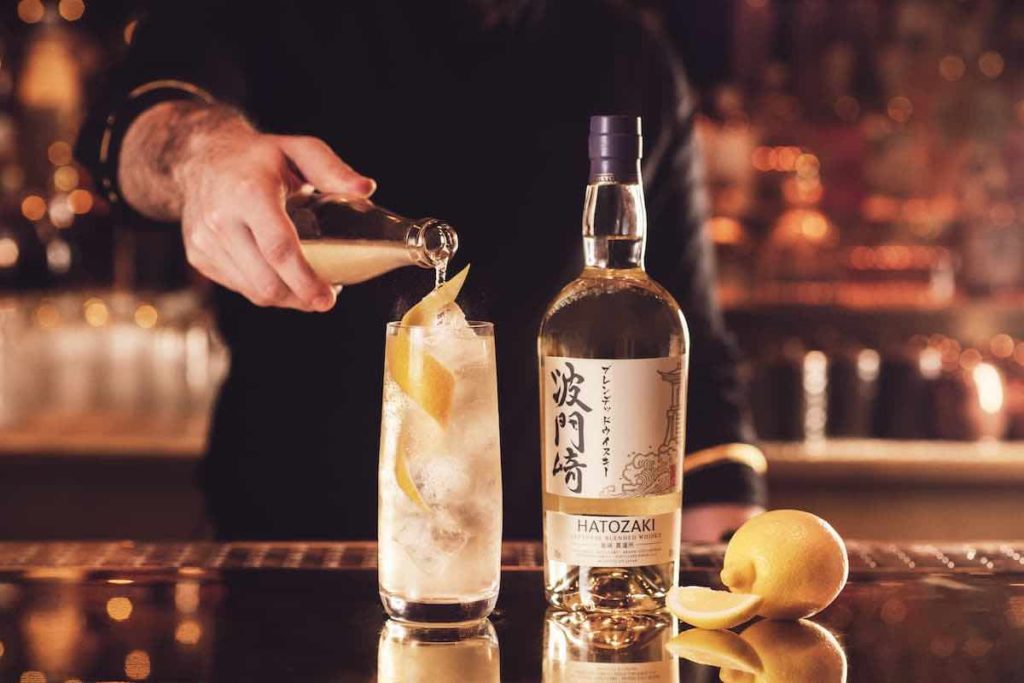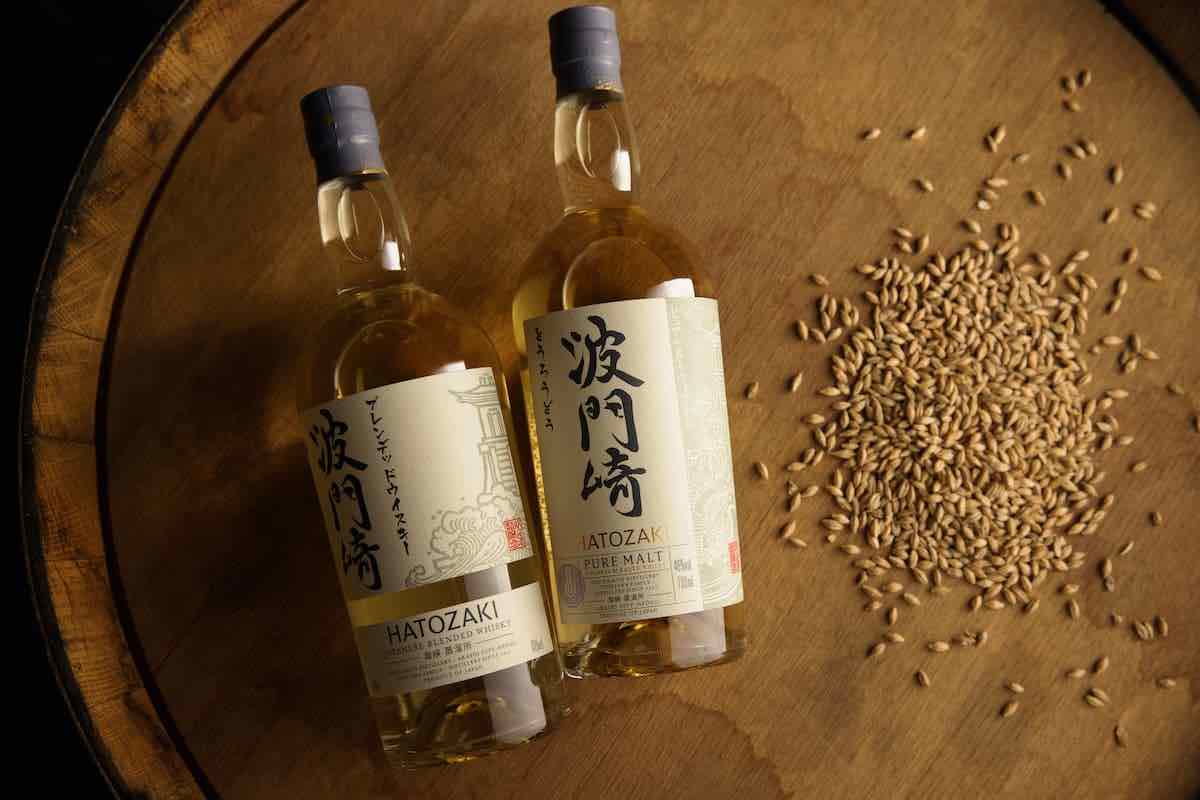American interest in Japanese whisky has yet to cool, and this past fall saw another contender enter the ring: Hatozaki Whisky. Compared to well-established names like Nikka and Suntory, Hatozaki is something of a question mark: To date, its official website remains a “coming soon” placeholder, and it has little other online presence aside from a sparse (if pretty) Instagram page.
But a virtual tasting with Master Distiller and Blender Kimio Yonezawa gave me a chance to learn more about Hatozaki whisky, the distillery that produces it, and their plans for the future.
A Family Mission
Hatozaki may be new, but distillation runs in Yonezawa’s blood. In 1856 his family founded the Akashi sake brewery (Yonezawa also serves as its fourth-generation master brewer), where they began to distill shochu in 1917. Both the Hatozaki label and the Kaikyō distillery it calls home were founded in 2017 to mark this centennial.
However, Yonezawa is not the first member of his family to catch the whisky bug. In a family registration book, Yonezawa discovered a 60-year-old entry from one of his forebearers outlining his dream to one day distill vodka and whisky.

“I didn’t know until recently [that distilling whisky] was a big dream project of my ancestor, and I’m really happy that this dream comes true now,” Yonezawa says.
The Climate
The Kaikyō distillery, which shares space with the Akashi sake brewery, is located in Hyōgo Prefecture, which sits on the south-central side of Japan’s largest island, Honshu. The distillery itself is just two minutes from the ocean and is named after the nearby Kaikyō suspension bridge connecting Kobe to the island of Awaji.
The coastal location and local climate play a big role in the maturation process. Hyōgo Prefecture sees temperatures of up to 104 degrees Fahrenheit in the summer yet still experiences winter. This dramatic fluctuation in temperature—coupled with a humidity rate that can reach 90% in summer—acts as an accelerant in the whisky aging process.
The Whiskies
But Hatozaki—which is itself named after the oldest stone lighthouse in Japan, dated to 1620—hasn’t existed long enough for even a sped-up maturation process to take its own spirit entirely from still to bottle. The first two Hatozaki releases, Finest Whisky and Small Batch, are made by blending whiskies distilled in Japan and imported from Scotland.

Finest Whisky, which is made up of whiskies aged between three and 12 years and matured in bourbon barrels, is bottled at 40% ABV and positioned as a Highball maker. It’s light in both color and taste, with a pleasant sweetness balanced by crisp cereals and rich malt character.
Small Batch is a blend of 100% malt whiskies between five and six years of age. The name isn’t pure marketing lingo: The whisky is made in batches of 20 casks or less, and matured in a mix of bourbon, sherry, and mizunara casks. It’s also the perfect counterpart to the mellow smoothness of Finest. Small Batch is smoky and spicy, yet never overwhelmingly so, and in ways that are distinctly different from that of a scotch or any American single malt, likely owing to the presence of that mizunara oak.
Future Plans
Kaikyō’s twin copper pot stills, created by Scottish maker Forsyths, have been distilling malt since 2017, and the distillery hopes to unveil its own single malt by 2025. But Kaikyō’s focus goes beyond brown spirits. The distillery also produces a gin currently available in the United States called 135° East. It’s named for Hyōgo’s meridian and takes a distinctly Japanese approach to gin-making by including a small amount of distilled sake and utilizing native botanicals including yuzu, sansho pepper, shiso leaf, sencha, and ume.
In the nearer future, you can expect to see new permanent expressions and limited editions added to the Hatozaki lineup. And a visitor center is under construction that will manage tours to both the Akashi sake brewery and the Kaikyō distillery, giving us two more reasons to hope the world gets back to normal soon.



